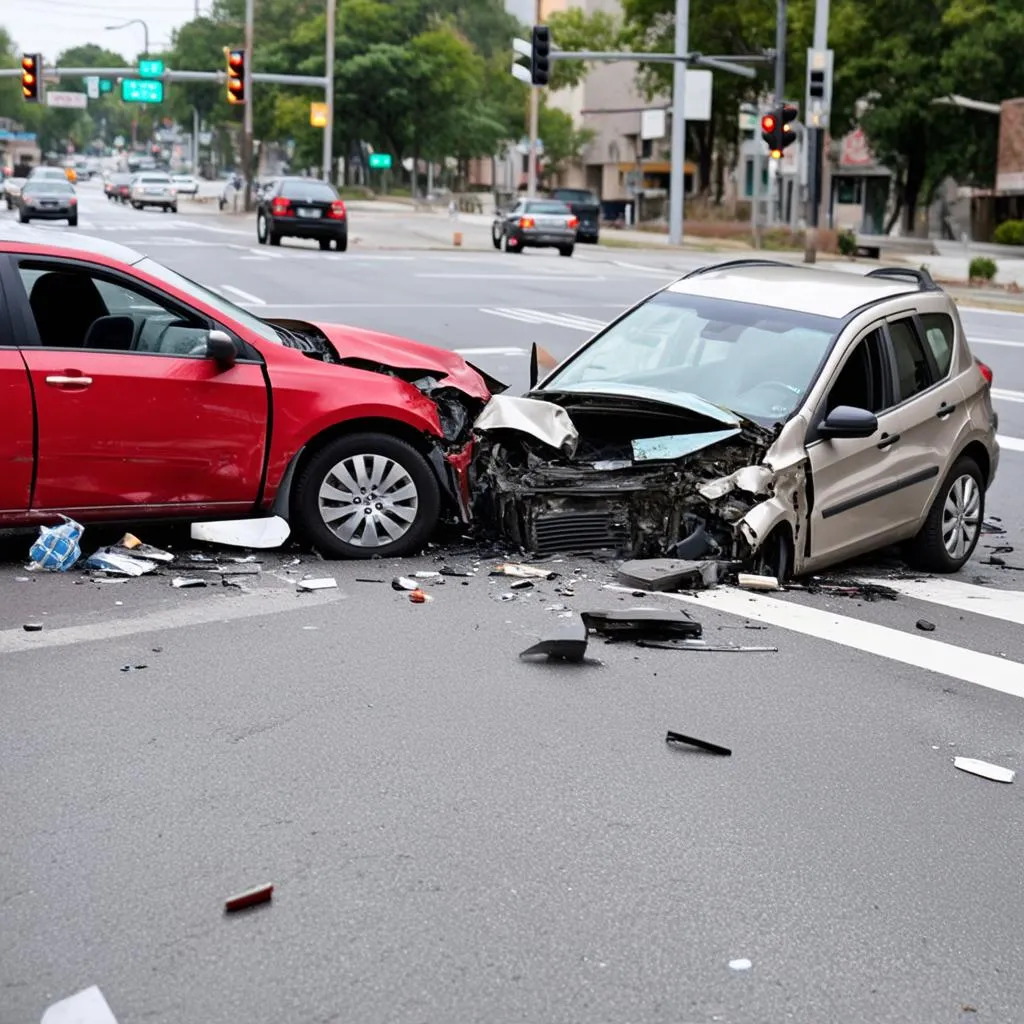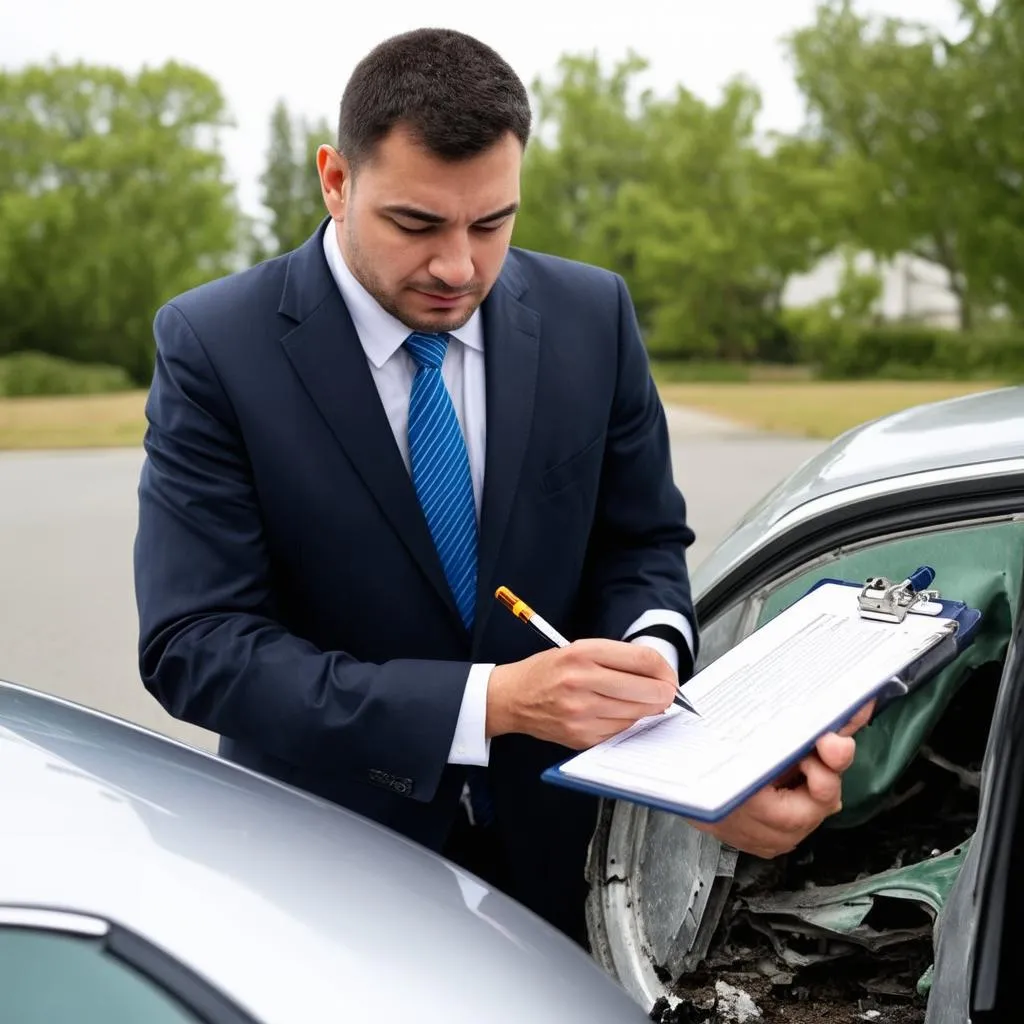Imagine cruising down Sunset Boulevard in your sleek Audi A4, California sun warming your face, when suddenly – BANG! A reckless driver in a beat-up Ford F-150 runs a red light, leaving you with a dented fender and a pounding heart. It’s a clear-cut case, right? Well, not always. This is where the concept of “Shared Liability Car Accidents” comes into play, and it can get complicated quickly.
What Exactly is a Shared Liability Car Accident?
In a nutshell, a shared liability car accident means that more than one party involved shares the blame – and therefore, the financial responsibility – for the damages and injuries. This differs from a scenario where one driver is 100% at fault.
“Think of it like a pie chart,” explains automotive repair specialist, Johnathan Miller, author of “The Auto Repair Bible.” “In some accidents, the fault is split cleanly down the middle – 50/50. But in many cases, it’s more nuanced. One driver might be 70% at fault, while the other is 30% responsible. This percentage directly impacts how much each party pays for damages.”
Unpacking the Nuances of Shared Fault
Determining fault in a car accident involves careful consideration of various factors:
1. Traffic Laws:
- Speeding: Even if you had the right of way, exceeding the speed limit can increase your percentage of fault.
- Running Red Lights/Stop Signs: This is a major traffic violation and often a clear indicator of fault.
- Illegal Turns: Making an improper turn, like turning left from the wrong lane, can significantly contribute to an accident.
2. Evidence & Witness Testimony:
- Dashcam Footage: Video evidence can provide undeniable proof of who was at fault.
- Police Reports: While not the final word, police reports offer valuable insights into the accident scene and potential contributing factors.
- Witness Statements: Eyewitness accounts can corroborate or contradict driver statements, proving crucial in determining fault.
3. Environmental Factors:
- Weather Conditions: Heavy rain, fog, or snow can create hazardous driving conditions, impacting driver visibility and control.
- Road Conditions: Potholes, debris, or poorly maintained roads can contribute to accidents.
Common Scenarios of Shared Liability
- Rear-End Collisions: While the driver who rear-ends another vehicle is often considered at fault, the driver in front could share some liability if they slammed on their brakes suddenly or were driving erratically.
- Intersection Accidents: Failure to yield the right of way is a common cause of intersection accidents, but both drivers might share fault if one driver was speeding or distracted.
- Lane Changes: If a driver merges into another lane without checking their blind spot and collides with another car, they’re likely at fault. However, the other driver might share some liability if they were speeding or following too closely.
How to Protect Yourself in Case of a Shared Liability Accident
- Gather Evidence: Take photos of the accident scene, damage to all vehicles, and any visible injuries.
- Exchange Information: Get the other driver’s name, contact information, insurance details, and vehicle information.
- Contact the Police: Report the accident, even if it seems minor. A police report can serve as crucial documentation.
- Don’t Admit Fault: Even if you think you might be partially at fault, avoid admitting guilt. Let the insurance companies and, if necessary, the courts determine liability.
- Consult with an Attorney: If you’ve been injured or there’s significant damage, speaking with a qualified attorney specializing in car accidents is crucial. They can protect your rights and ensure you receive fair compensation.
Shared Liability: A Complex Issue with Real-World Consequences
Shared liability car accidents often present complex scenarios that require careful analysis of all contributing factors. Understanding the concept of shared fault and taking steps to protect yourself can make a significant difference in the outcome of your case.
 Intersection car accident
Intersection car accident
Still Have Questions About Fault and Liability in Car Accidents?
Navigating the aftermath of a car accident can be overwhelming. For more information on fault determination in specific situations, such as two cars backing out or removing speed limiters with OBD scanners, you can find helpful resources on our website like “Two Cars Backing Out – Who is at Fault?”.
 Insurance adjuster inspecting car damage
Insurance adjuster inspecting car damage
If you have any questions about automotive diagnostics tools or need expert advice on car repair issues, don’t hesitate to contact us via WhatsApp at +84767531508. Our team of experienced automotive technicians is available 24/7 to provide support and guidance.
Remember, knowledge is power. By understanding your rights and responsibilities in shared liability accidents, you can navigate the complexities of the legal system with greater confidence.